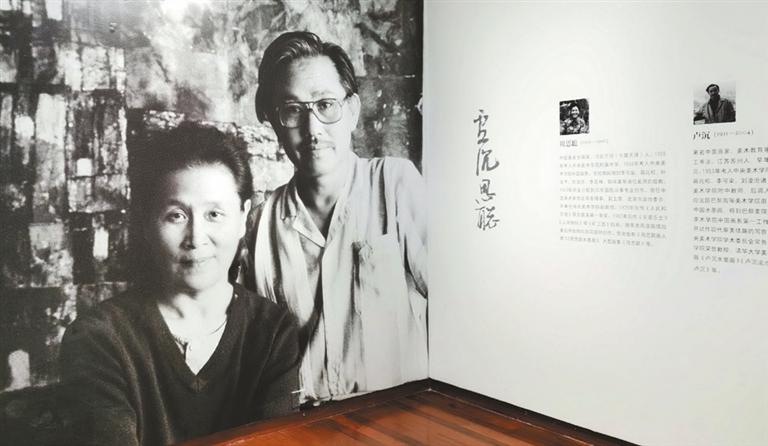
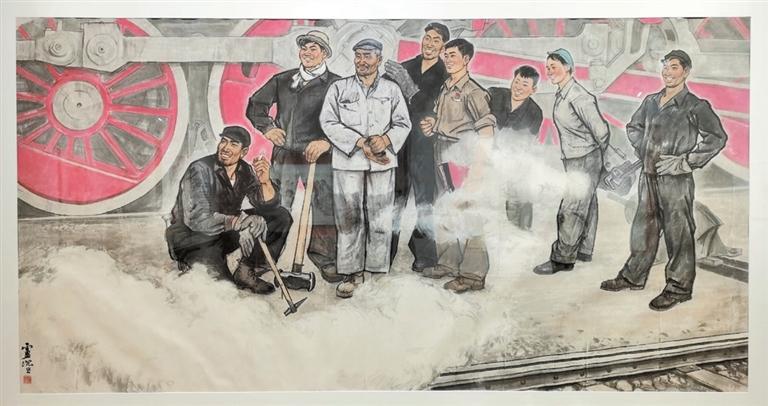
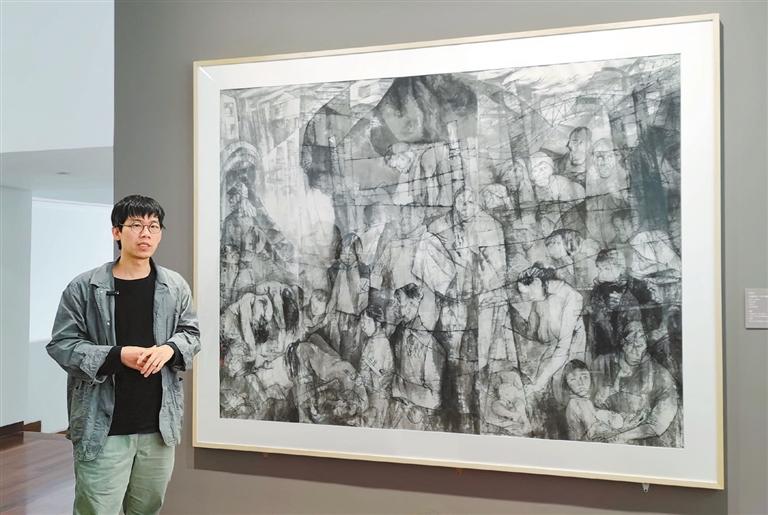
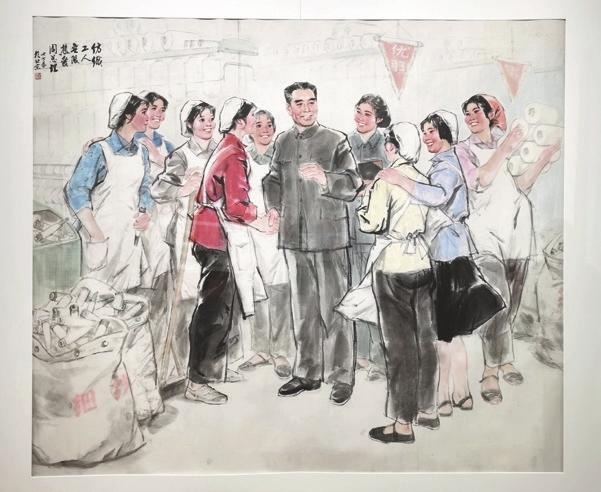
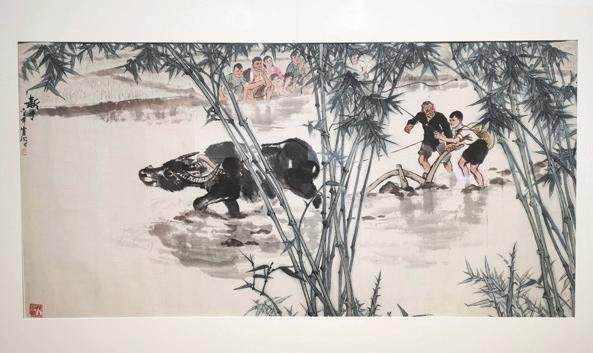
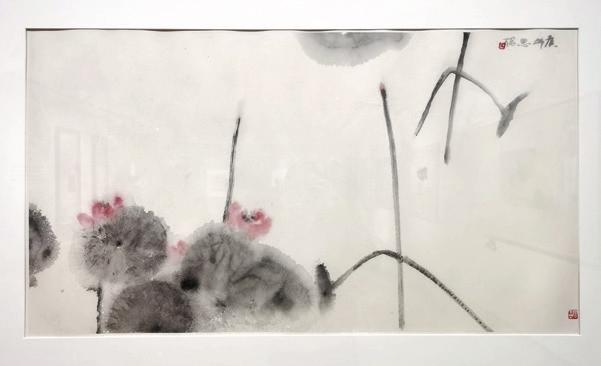
Cao Zhen caozhen0806@126.com CHINESE painting couple Zhou Sicong (1939-1996) and Lu Chen (1935-2004) may not be as prominent as their Central Academy of Fine Arts teachers, such as masters Li Keran, Jiang Zhaohe and Ye Qianyu, but the couple’s diligence, lifelong passion for art and seeking of artistic exploration have earned them high recognition. The “Art Is Long: Retrospective of Zhou Sicong and Lu Chen” exhibition at the He Xiangning Art Museum features over 80 paintings and calligraphic works by the two artists. The artworks, on loan from the Beijing Fine Art Academy, were created between 1963 and 2003. At the exhibition, visitors have a rare chance to view the couple’s shocking ink painting series themed on Chinese coal miners oppressed by Japanese invaders from 1931 to 1945. The couple treated the tragic theme with stark forms, portraying the miserable conditions of the coal miners and their families during the wartime; the distorted human figures in the paintings render the grief and harrowing experiences, embodying a deep empathy with human suffering and advocating for peace. According to the exhibition introduction, when Zhou was a teenager, she was influenced by the artwork of Käthe Kollwitz, a great practitioner of German Expressionism who illustrated the plight of the poor. A painting series, depicting the horrible aftermath of the atomic bombing in Japan created by Japanese couple, Toshiko and Iri Maruki, also made an impact on Zhou when the painting series was exhibited in China in 1956. To paint the Chinese coal miner series, Zhou and Lu did research in 1980 in a coal mine in Liaoyuan, Northeast China’s Jilin Province, where there are remaining sites commemorating the Chinese coal miners tortured by the Japanese invaders between 1931 and 1945. The couple created the series in the early 1980s, with some paintings finished by Zhou alone due to Lu’s health condition. Fragmented scenes and overlapping distorted figures in the paintings symbolize the shattered souls under the oppression. In the paintings, one can see mountains of dead bodies, numerous workers cruelly bound or beaten, the harsh environment of mining, and the grief of skinny children and seniors. The painting series and some drafts and sketches were later exhibited in Japan in 1984. They were also exhibited at the National Art Museum of China in 2005 and Beijing Fine Art Academy in 2015 to commemorate the 60th and 70th anniversary of the victory of the World Anti-Fascist War, respectively. Before creating the woeful coal miner series, both artists were known for their bright realistic paintings. In the 1960s and 1970s, they portrayed the uplifting labor and life scenes of workers and farmers in new China. Incorporating the traditional Chinese New Year woodblock painting style, their realistic paintings are warm, sincere and close to the viewers’ hearts. Zhou was also renowned for her ink paintings of figures, full of expressiveness and spiritual strength. She later suffered from rheumatoid arthritis, which caused deformity and pain in her hands. Unable to concentrate on meticulous brushwork, she had to shift to a more abstract style by using bulk shades in her many lotus-themed ink wash paintings. She once said the trace of water and ink on paper made her pleasant. “Lotus flowers create a tranquil atmosphere, which comforts me,” she said. Lu was skilled in creating lively and moving images with precise and vivid strokes in his ink paintings. As early as the 1970s, he advocated for Chinese ink painting to learn from modern art and emphasized the diversification of this painting form. As an artist with an active mind, he continued his exploration of modern aesthetic taste in Chinese paintings in the 1990s. He set up the “Ink Painting Composition” course at the Central Academy of Fine Arts. His integration of elements such as space, composition and color into traditional Chinese ink painting made his works of this period present a sense of modernity. Dates: Until June 25 Hours: 9:30 a.m.-5 p.m., closed Mondays Venue: He Xiangning Art Museum, Nanshan District (何香凝美术馆) Metro: Line 1 to OCT Station (华侨城站), Exit C | 
